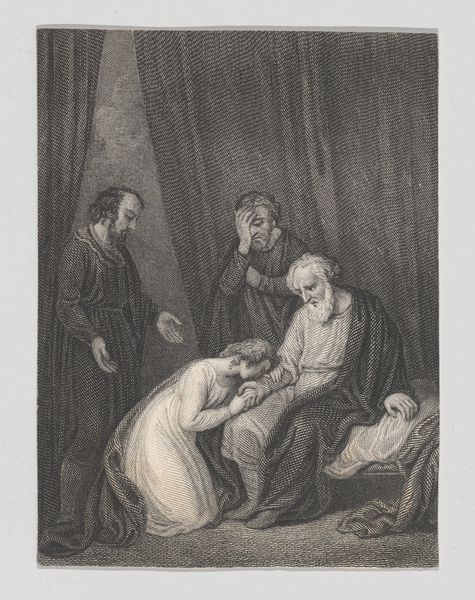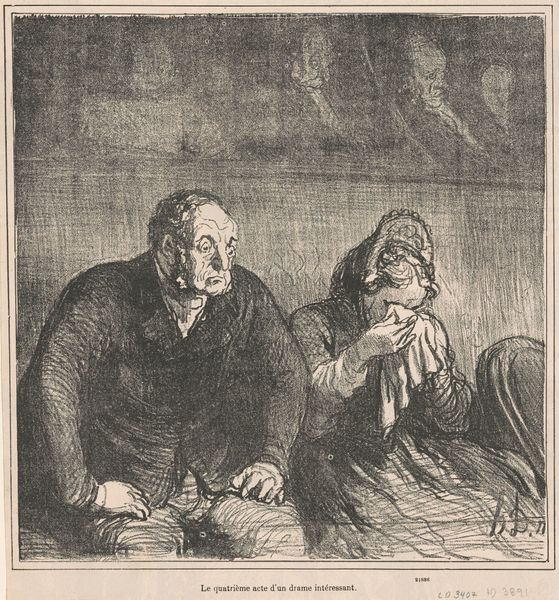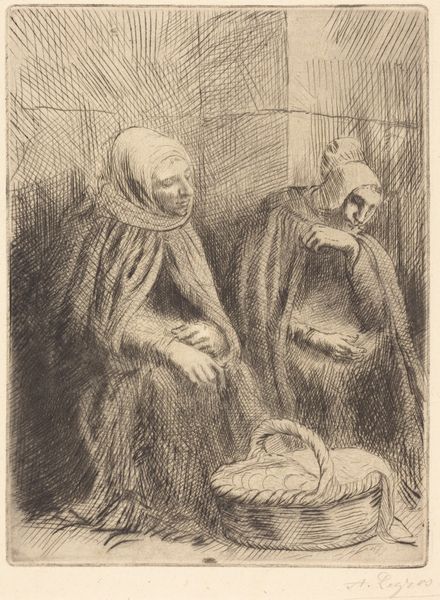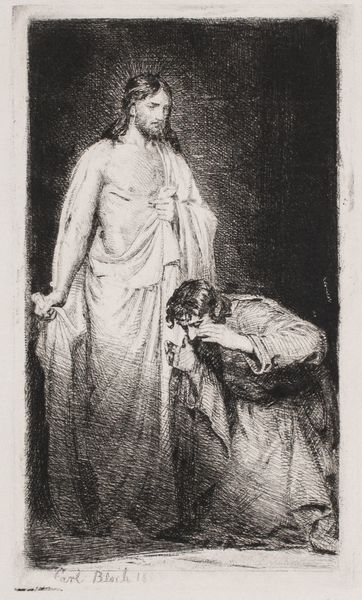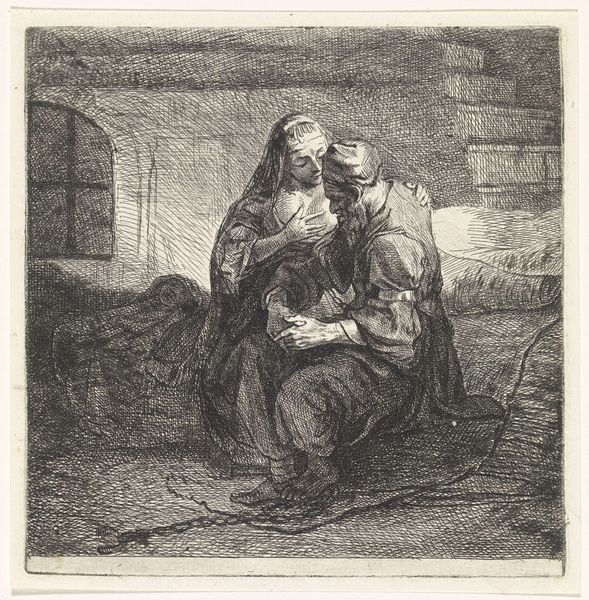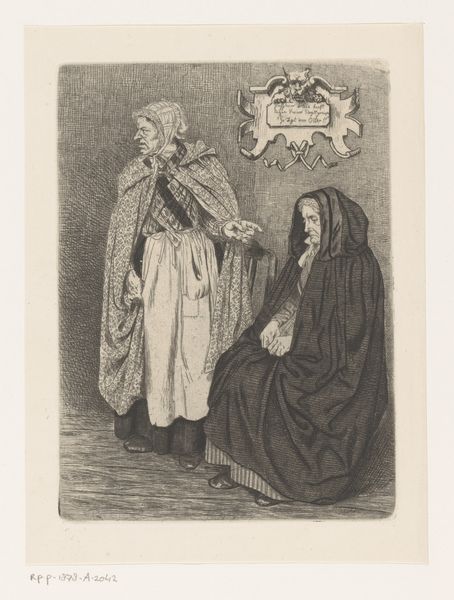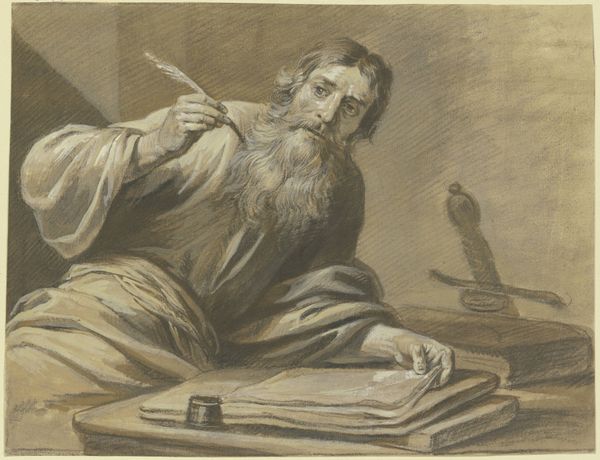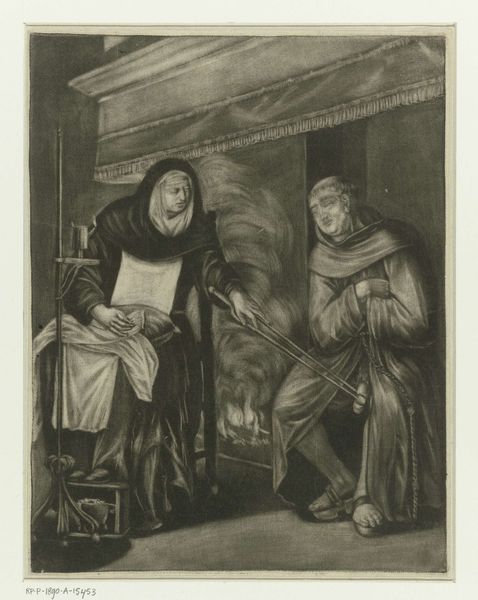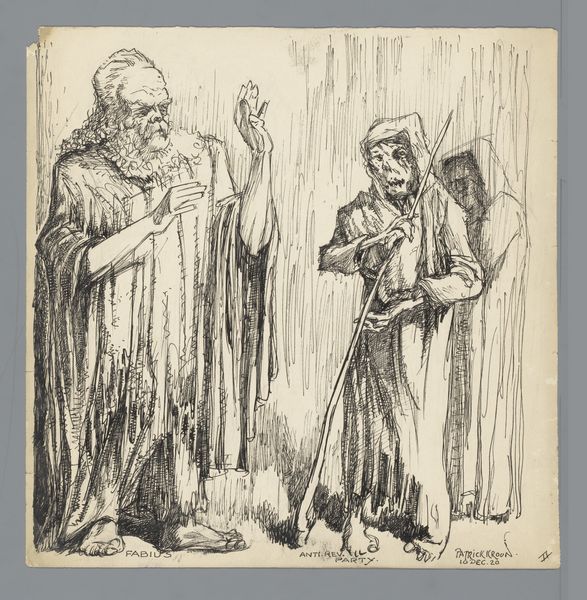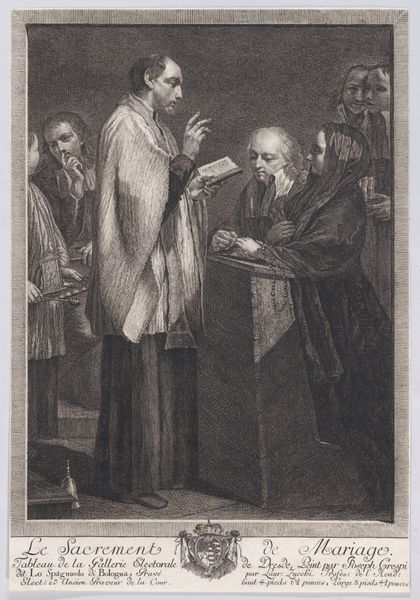
Dimensions: height 106 mm, width 151 mm
Copyright: Rijks Museum: Open Domain
Editor: This ink drawing from somewhere between 1830 and 1881 by Adolphe Mouilleron, titled "Man on a Couch next to a Roman Catholic Clergyman," feels heavy, almost oppressive. The contrast is quite stark between the lounging man and the robed figure. What story do you see unfolding here? Curator: The weight you feel comes, I think, from the rich symbolic tension. Notice how the reclining man's posture, the informal draping of his clothes, clashes with the priest’s rigid stance and devotional rosary. It speaks of transgression meeting tradition. Think about how such images played out culturally; this evokes a moment of potential confession, a battle between earthly desire and spiritual duty. The visual language points to deep anxieties of faith, sin, and redemption in the Romantic era. Do you see that dialogue echoed in their faces? Editor: I do, actually! The cleric looks worried, almost sad, while the man on the couch looks, maybe, defiant? Or is he pleading? The rosary almost looks like a weapon… Curator: It's a potent emblem. More than a weapon, it signifies a kind of prescribed remedy or even a barrier. The symbol looms large, doesn’t it? It begs the question: Can ritual comfort a troubled soul, or does it merely amplify the divide between the sacred and the profane? What stays with you most? Editor: The unresolved nature of it, how Mouilleron leaves it hanging in the balance. There’s no easy answer or judgment. I appreciate that the artist used the cultural context and made a symbol the centerpiece for thought, and dialogue. Curator: Precisely! These visual cues become gateways to understanding broader societal tensions. The emotional power imbued within symbols offers narratives and possibilities far beyond the surface of the image itself.
Comments
No comments
Be the first to comment and join the conversation on the ultimate creative platform.
